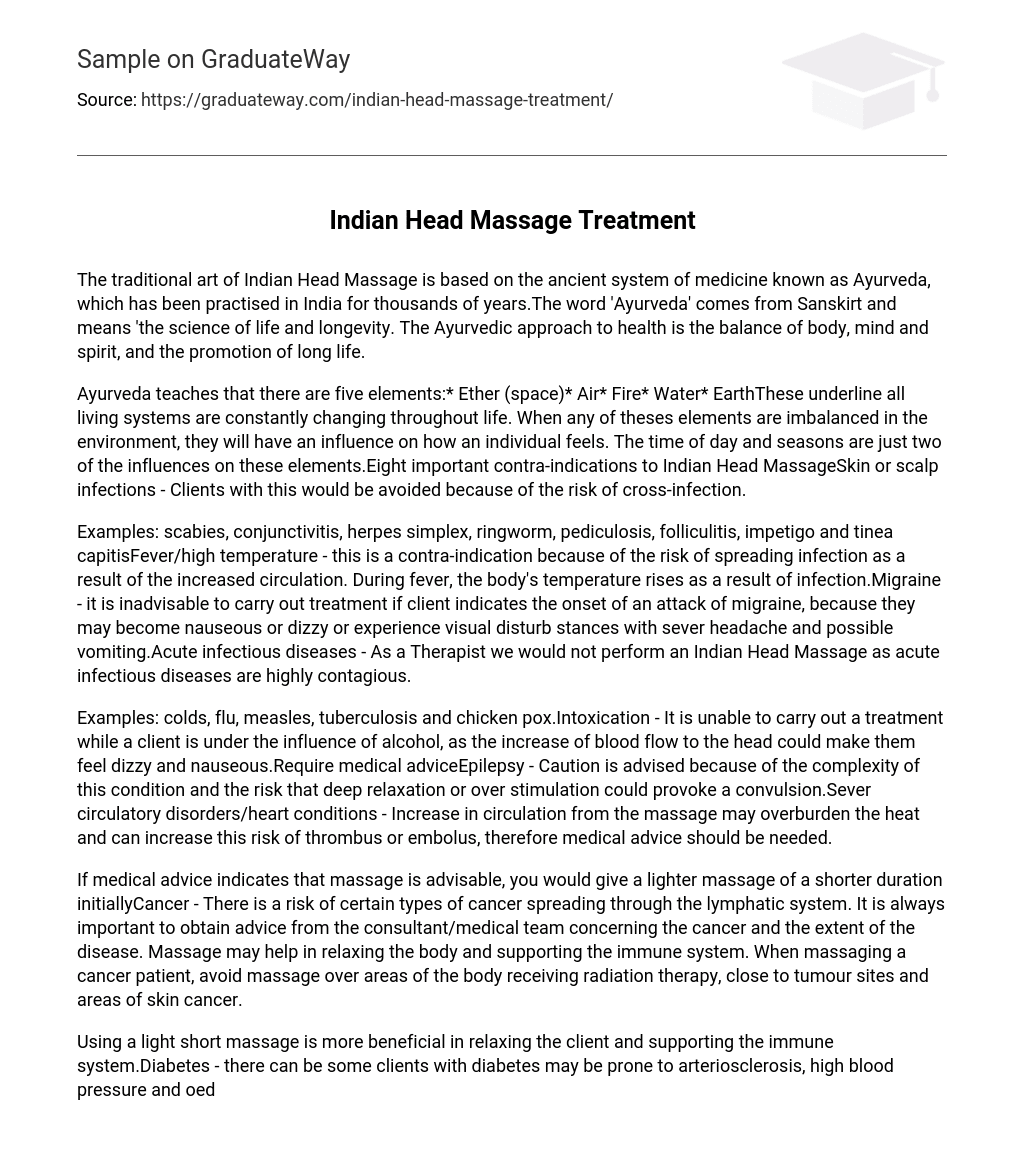The traditional art of Indian Head Massage is based on the ancient system of medicine known as Ayurveda, which has been practised in India for thousands of years.The word ‘Ayurveda’ comes from Sanskirt and means ‘the science of life and longevity. The Ayurvedic approach to health is the balance of body, mind and spirit, and the promotion of long life.
Ayurveda teaches that there are five elements:
- Ether (space)
- Air
- Fire
- Water
- Earth
In India, from birth to old age, the tradition of massage is passed down from generation to generation and is an integral part of everyday family life. Getting a head massage while going to the barbershop is common in India and is also included in special rituals such as weddings and birthdays. For an Indian head massage, you do not need to undress, as it can be done without oils, through light clothing. This makes it especially suitable for massage beginners or clients who may be a bit wary of the treatment.
When we are under stress, the scalp can tighten and tighten, restricting blood flow to the area. A regular Indian head massage can help by stimulating blood flow to the follicles to loosen the area, which in turn delivers the nutrients needed to stimulate healthy hair growth and strengthen and strengthen hair.
Oils can be incorporated into an Indian head massage for skin softening and deep hair care. Sesame oil is a popular general purpose oil traditionally used in Ayurvedic massage. This balancing oil is not only ultra-nourishing, but also believed to help relieve muscle pain and stiffness. Olive oil is a good alternative and is especially suitable for dry hair and scalp.
The combination of quick rubbing motions to stimulate and refresh and slower circular warm-up motions to soothe and relieve tension in the neck and scalp make Indian head massage an effective headache remedy. With regular treatment, the frequency and intensity of stress-related headaches can be greatly reduced as massage relieves tension and promotes relaxation.
Indian head massage also includes pressure points on the forehead and around the eye sockets to relax and soothe tense muscles and eye strain. Working on pressure points on the cheekbones can also be helpful in relieving sinus congestion.





